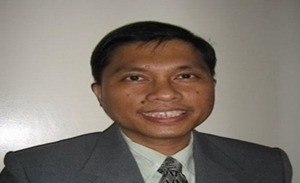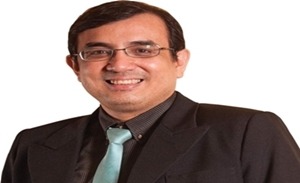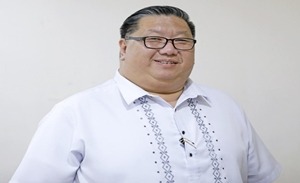FRESH VIEWPOINTS: A NEW PERSPECTIVE
By Brian James Lu

I deeply regret that Richard Heydarian’s lack of understanding of Mindanao’s realities led him to draw an unfounded comparison to sub-Saharan Africa. Having been born and raised in Mindanao myself, I can confidently say that nothing could be further from the truth.
Consider this. Sub-Saharan Africa remains one of the world’s poorest regions, with a significant portion of its population living in extreme poverty. Despite periods of economic growth, wealth remains highly concentrated, leaving millions struggling to afford necessities, such as food, clean water, healthcare, and education. High levels of unemployment and underemployment, particularly among young people, further entrench cycles of poverty.
Weak infrastructure, poor governance, and ongoing conflicts continue to hinder economic progress and social development in sub-Saharan Africa. The region is also highly vulnerable to climate change, with droughts, floods, and other environmental disasters exacerbating food insecurity and displacing communities. While efforts to combat poverty persist through international aid, social programs, and economic reforms, progress has been slow. Sustainable and inclusive solutions are essential to lifting millions out of deprivation and fostering long-term economic resilience.
Mindanao, the second largest island in the Philippines, on the other hand, holds significant potential for economic growth, particularly in agriculture, renewable energy, and infrastructure. The island is rich in natural resources, with abundant deposits of gold, copper, and other minerals, as well as vast tracts of fertile land ideal for agriculture. Administratively, Mindanao is composed of 28 provinces, 33 cities, and six regions, with highly urbanized centers, such as Davao City, Zamboanga City, Cagayan de Oro, General Santos, and Cotabato City driving economic activity. These facts alone highlight the stark contrast between Mindanao and sub-Saharan Africa, directly contradicting Heydarian’s claim.
The Mindanao Development Authority (MinDA) has criticized Heydarian for his insensitive remarks about Mindanao. MinDA Secretary Leo Tereso Magno emphasized the importance of informed discourse, stating, “While we welcome critical discussions that spark meaningful conversations, such narratives must be based on accurate data, cultural sensitivity, and a genuine appreciation for the complexities of regions like Mindanao – not on outdated stereotypes that diminish the progress we have collectively achieved.”
The MinDA chief highlighted that Mindanao’s 2022 Human Development Index (HDI) of 0.68 remains significantly higher than the aggregate HDI of sub-Saharan Africa. He further noted that every region in Mindanao – including the Bangsamoro Autonomous Region in Muslim Mindanao (BARMM) – has shown consistent improvement in HDI over the past five years, reflecting tangible progress in health, education, and economic opportunities.
Of course, Magno speaks with authority on the matter. As the head of the Mindanao Development Authority (MinDA), he leads the agency responsible for coordinating and integrating development efforts across Mindanao, ensuring active sector participation to drive socio-economic progress.
Heydarian’s remarks have deeply offended the people of Mindanao. In response, several local government units (LGUs) across the region have declared him persona non grata for spreading “false narratives” and making a “baseless comparison.”
Heydarian has since apologized for his mistake and posted an updated 2024 HDI for several regions in Mindanao, highlighting their classification as medium- to high-HDI. Heydarian has only himself to blame for speaking carelessly and ultimately undermining his own credibility.
The steady progress of Mindanao’s socio-economic development sets it apart from sub-Saharan Africa. Under the administration of President Ferdinand R. Marcos Jr., an ambitious plan has been set in motion to drive the island’s growth, focusing on infrastructure development, economic expansion, and long-term sustainability.
In 2023, the government allocated PHP2.4 trillion for infrastructure projects across Mindanao, aiming to enhance connectivity, boost trade, and strengthen key industries, such as agriculture and tourism. Major initiatives include the expansion of highways, bridges, and ports to improve the efficient movement of goods and people.
Marcos has also approved the Philippine Development Plan (PDP) 2023-2028, which aligns with Mindanao’s development goals by encouraging investment, generating employment, and fostering peace-building efforts, particularly in conflict-affected areas like the Bangsamoro Autonomous Region in Muslim Mindanao (BARMM). These initiatives are expected to sustain Mindanao’s socio-economic growth, improve living standards, and reinforce its role as a crucial contributor to the national economy.
Indeed, the comparison between Mindanao and sub-Saharan Africa is not only inaccurate but also dismisses the island’s steady socio-economic progress. Mindanao continues to rise as a key player in the Philippines’ development, bolstered by strategic government investments, a thriving agriculture and resource sector, and improving human development indicators. While challenges remain, the region’s growth trajectory, backed by sound policies and infrastructure projects, signals a promising future. Instead of outdated stereotypes, Mindanao deserves recognition for its resilience, potential, and contributions to national progress.





